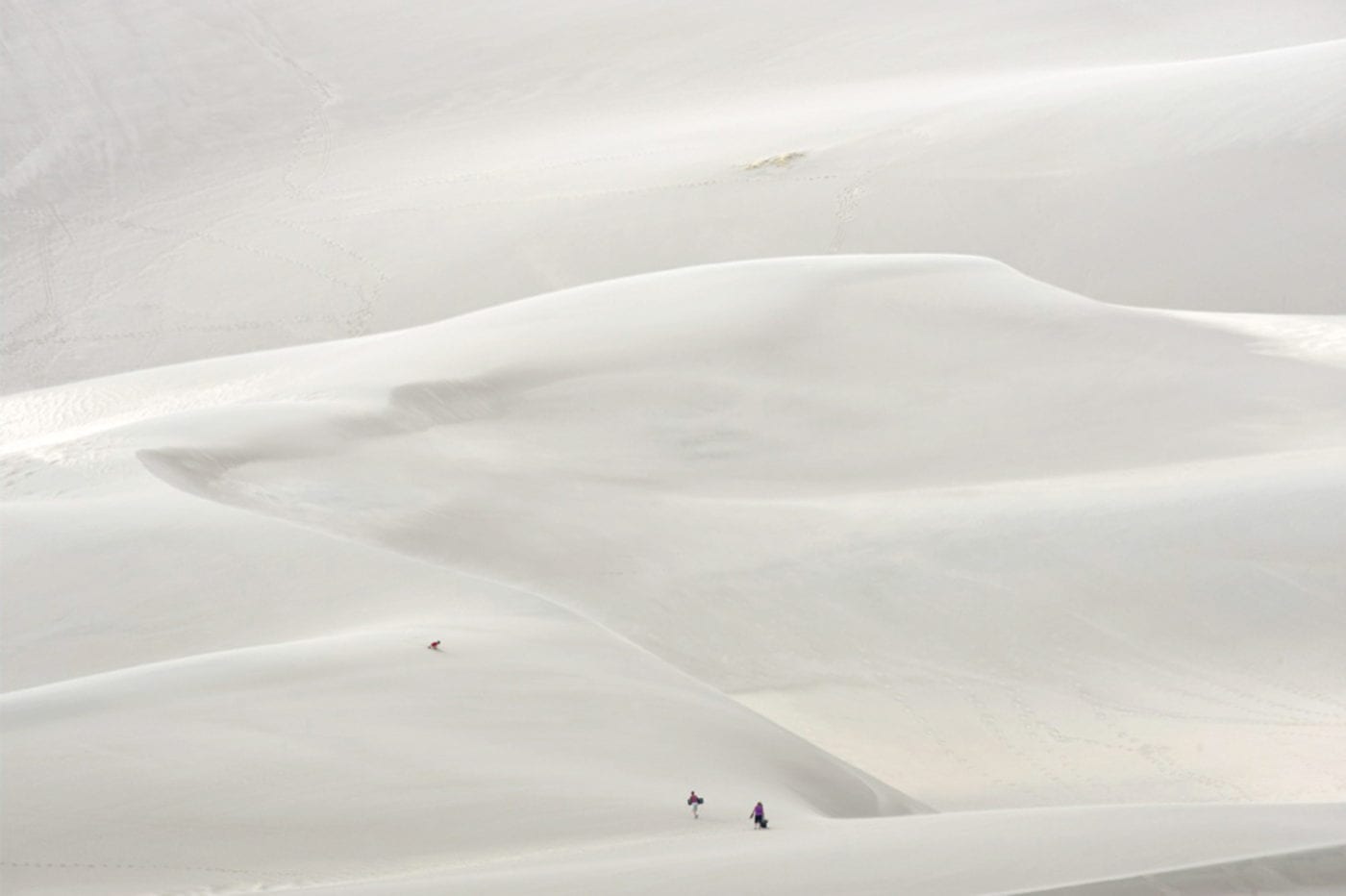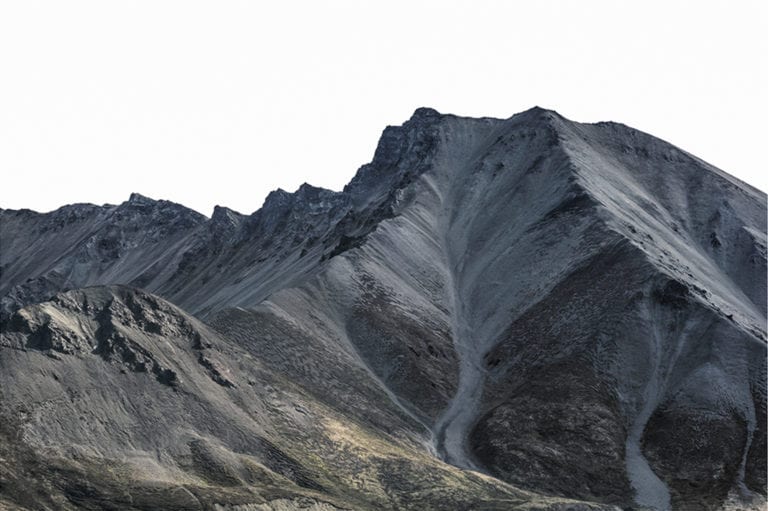
PHOTOGRAPHER RENATE ALLER CAPTURES THE SPACES BETWEEN
March 27, 2019
By Michelle Trauring

When Renate Aller walked through her front door in New York, she found her husband waiting expectantly.
“How long does it take you to pack?” he asked her hurriedly.
“For what?” she replied.
“For a mountain.”
“Umm, two hours?” she said. “And that’s pushing it.”
He paused. “Well … How about one hour?”
The German-born photographer took a deep breath, focused and immediately grabbed her winter clothes, boots and camera gear, shoving them into her luggage. The Bernese Alps were calling and the couple knew they wouldn’t wait. The time to go was now.
“The reason we had to go that day is I was going to take a picture of the Eiger, a very famous mountain, and it’s one of the most difficult mountains to climb. So the only way to take a photo of it is you have to go onto a mountain across, which is called First,” Aller explained during a recent telephone interview. “And they were about to close their lift service.”
Jetlagged in Switzerland, they scrambled out of bed the next morning, just nearly catching the final lift of the season. Aller set up her camera and was snapping the coveted photos of Eiger — the ones she craved for years — when she turned her head to the left.
There, she saw a river of clouds snaking through the mountain pass — rendering her speechless as she rotated her camera and caught the moment. “It was beautiful, it was mesmerizing, and that became one of my favorite pictures from the trip,” she said.

The photo, “Mountain Interval PLATE 41 #12s, Swiss Alps,” is a personal highlight in the show, “Renate Aller: The Space Between Memory and Expectation,” now on view at the Parrish Art Museum in Water Mill alongside another photography exhibit, “Jean-Luc Mylayne: A Matter of Place,” drawn entirely from the permanent collection, according to director Terrie Sultan.
“Renate Aller and Jean-Luc Mylayne are both very dedicated to humanity’s interaction with nature and they physically take their pictures outside,” she said. “Other than that, they have two very distinct, very different points of view, creative approaches, and their work, of course, doesn’t look anything like each other.”
Once a year from 2004 to 2006, French-born Mylayne also packed his bags and, less hastily, made his way to Fort Davis, Texas, of all places. A seemingly odd choice on the surface, the town is the only place in the world where the Eastern, Western and Northern blue birds’ migratory paths cross — and as a photographer whose life-long project is the exploration of the color blue, and his subject matter birds, of course he would know.
“Sometimes finding the bird in the photograph is a little bit like playing ‘Where’s Waldo?’ because it is not always necessarily front and center, but it is always there as a metaphor for humanity in the nicest, most gentle way — how birds integrate into their natural habitat,” Sultan said.
“I think of Jean-Luc as being a photographer’s version of a plein air painter, like William Merritt Chase. He took his camera — he uses a great big glass plate, 8-by-10, an analog camera — and he would sit in the landscape until the light and the bird and everything was just right, and then he would take one picture.”
Aller once practiced her photography in a similar way, except with her Agfa Click box camera at age 8, its edges sharp enough to cut her small fingers, if she wasn’t careful. She was limited to one roll of film every family vacation, allowing her eight images total.
“My parents never took us on luxury vacations, they always took us camping or mountain climbing. My toys were rocks and stones and little twigs,” she said. “Most images my father took of us, my sister is posing — she looks like an Italian movie star with dark hair. My mother, after years, knew how to hold a pose because my father took forever composing. He didn’t want to waste film.
“And I used to stand, in all these pictures, with my back to him,” she continued with a laugh. “So if you’d show these to a therapist, they’d probably have a whole lot to tell you about me rejecting my parents, but I was actually taking my own photo looking down. So, you can see, it’s a very sad picture. Skinny legs, head down, bent forward, and it’s because I was composing my own photo. There’s nothing wrong with me, otherwise.”
At age 15, Aller transferred to an all-boys school to capitalize on a more advanced art program, exploring her identity as a painter, then a sculptor and, finally, as a photographer, when her first solo show of oceanscapes — shot from her balcony on Dune Road in Westhampton Beach — opened in New York.
They would go on to inspire her series and book, “Ocean | Desert,” where the sands from the East Coast are often indistinguishable from the vast dunes of New Mexico and Colorado.
“People always think the photos are from the same location and, of course, they’re hundreds of miles apart from each other,” Aller said. “They just carry each other’s memory.”
It was during her last trip to Colorado’s Great Sand Dunes National Park and Preserve that, while she composed her image, she realized she was cropping out the backdrop of snow-capped Rocky Mountains behind the swirling sands.
And so began her “Mountain Interval” series, she said, a project that has taken her to six continents — from the Dolomites of Italy and the Himalayas of Nepal to the Andes of Chile and the Remarkables of New Zealand.
“By not taking the National Geographic view of the entire landscape, it’s like I’m photographing the essence of the mountain, not just a part of it,” Aller explained. “I think of it like a portrait of the mountain that I’m taking and, by cropping it, I create abstraction and you don’t understand the scale. You create a reality for yourself and then you create a presence. I think that’s why you don’t have to have an art education to look at these pictures, and you probably have a reaction because you are touched by its non-quantifiable space.”
Whether she’s watching a river of clouds snake through a mountain pass, or holding her breath as the sun breaks through a storm on the ocean horizon, Aller has honed her ability to predict a moment — and only then does she click her shutter.
That split second, she says, is “the space between memory and expectation,” during which nothing inherently happens, but without which no change could occur.
“We get very attached to a moment, to something we know and we want to hang onto that, whether it’s good or bad, really, but then our yearning for the next moment is as strong as the desire to stay with the moment we’re in. And that conflict, I think, makes us human beings.”
“Renate Aller: The Space Between Memory and Expectation” and “Jean-Luc Mylayne: A Matter of Place” are on view through July 28 at the Parrish Art Museum, located at 279 Montauk Highway in Water Mill. For more information, call (631) 283-2118 or visit parrishart.org.